
Date: September 9, 2019
Location: Lat: 39.88532°, Lon: -67.33907°
Dive Depth Range: 1,876 - 2,139 meters (6,159 - 7,022 feet)
Access Dive Summary and ROV Data
A tall bamboo whip coral surprises Okeanos Explorer science leads with its size. Its long, whip-like form is well-suited to the deep-sea environment. Video courtesy of the NOAA Office of Ocean Exploration and Research, Deep Connections 2019. Download larger version (mp4, 69.4 MB).
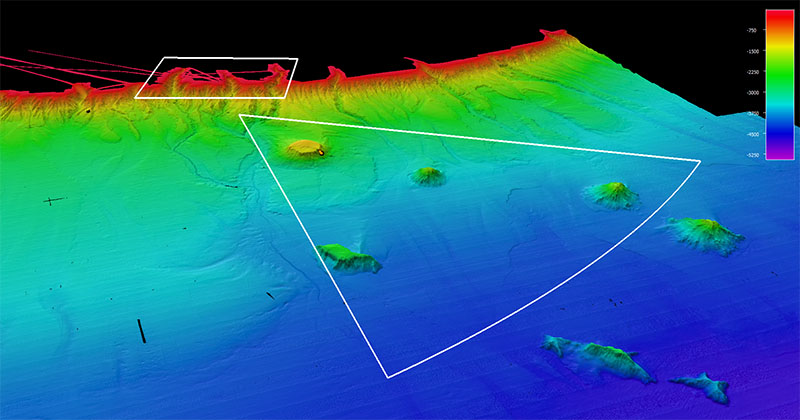
Map of the Northeast Canyons and Seamounts Marine National Monument. The rectangular shape to the left is the canyons unit, while the triangular shape below is the seamounts unit, where dive 8 of the Deep Connections 2019 expedition occurred. Image courtesy of James Gardner, The Center for Coastal and Ocean Mapping, Joint Hydrographic Center, University of New Hampshire. Download larger version (jpg, 1.1 MB).
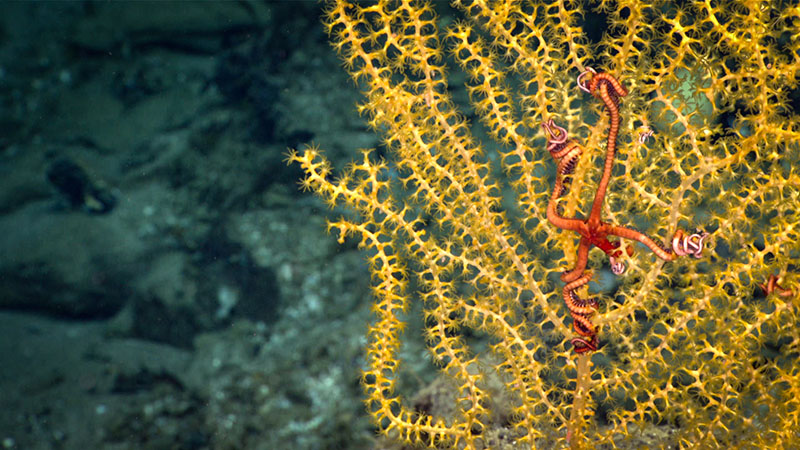
A snake star entwined itself tightly around the branches of an octocoral as seen on dive 8 of the Deep Connections 2019 expedition. Image courtesy of the NOAA Office of Ocean Exploration and Research, Deep Connections 2019. Download larger version (jpg, 1.6 MB).
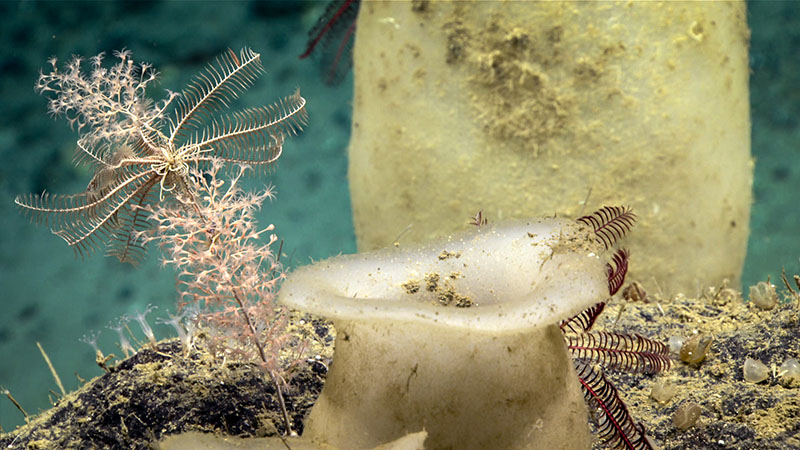
A wide diversity of sponges and corals were seen on dive 8 of Deep Connections 2019 expedition, which took place in the Northeast Canyons and Seamounts Marine National Monument. Image courtesy of the NOAA Office of Ocean Exploration and Research, Deep Connections 2019. Download larger version (jpg, 1.4 MB).
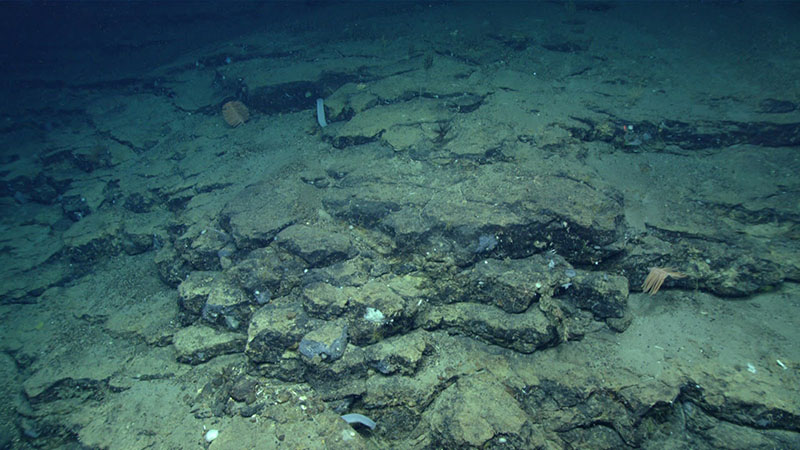
Slopes of manganese crusted basalt on Bear Seamount were characterized by a high diversity of deep-sea corals and sponges. Image courtesy of the NOAA Office of Ocean Exploration and Research, Deep Connections 2019. Download larger version (jpg, 842 KB).
Today’s dive took place on the eastern slope of Bear Seamount, within the seamounts unit of the Northeast Canyons and Seamounts Marine National Monument. Previous dives on Bear Seamount have explored the northern and western slopes at depths ranging between 1,450 - 1,650 meters (4,757 - 5,413 feet). However, the eastern slope of the seamount, which has the steepest slopes, was thus far unexplored. The purpose of the dive was to explore benthic communities near the face of what appears to be a strike-slip fault, as well as to investigate whether there is evidence for apparent normal faulting cutting across the width of Bear Seamount.
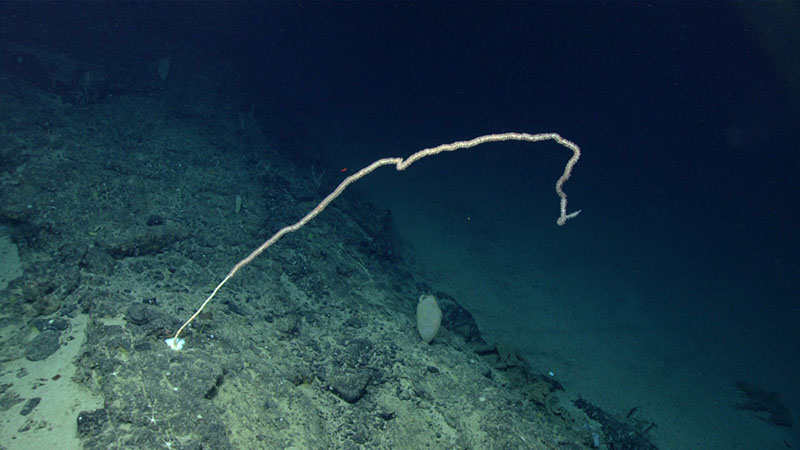
Reaching a length over 2 meters long, this whip-like bamboo coral colonized what appears to be an old pillow lava flow. Several such long bamboo corals were seen during dive 8 of the Deep Connections 2019 expedition. Image courtesy of the NOAA Office of Ocean Exploration and Research, Deep Connections 2019. Download larger version (jpg, 576 KB).
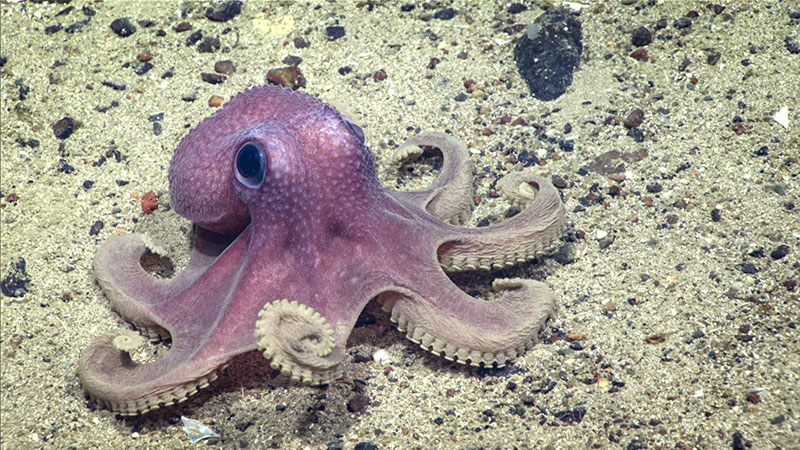
This Graneledone verrucosa octopus was seen on a steep sediment-covered slope on Bear Seamount during dive 8 of the Deep Connections 2019 expedition. Image courtesy of the NOAA Office of Ocean Exploration and Research, Deep Connections 2019. Download larger version (jpg, 1.6 MB).
The remotely operated vehicle (ROV) reached the seafloor at a depth of approximately 2,150 meters (7,054 feet). The bottom substrate generally consisted of rocks that originated from the nearby seamount walls, interspersed with fine pelagic sediments. Igneous rock was the most commonly seen rock type. A wide variety of glass sponges and demosponges were seen throughout the dive, with particularly dense groups found on exposed rock faces. Interspersed between the sponges were stunning arrays of long bamboo coral, bushy bamboo, golden coral, black coral, and plexaurid coral.
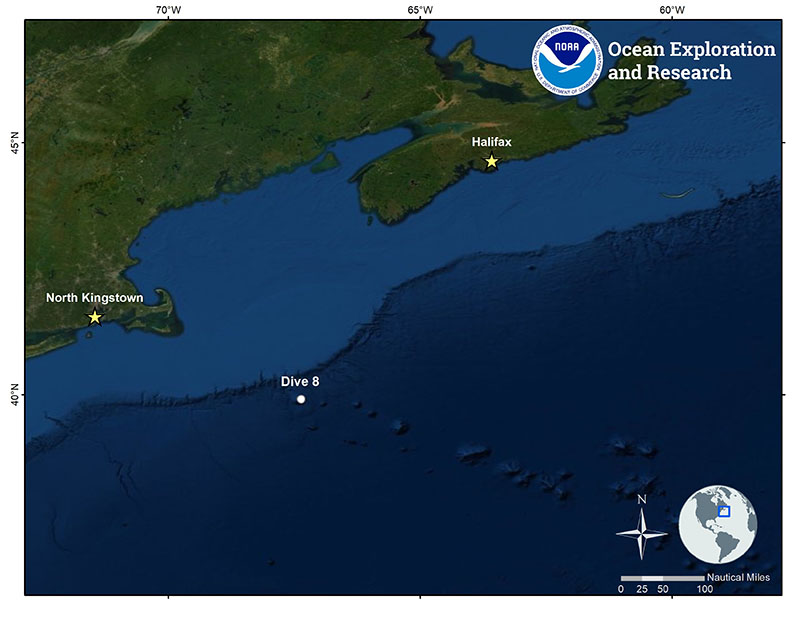
Location of dive 8 of Deep Connections 2019 expedition on September 9, 2019. Download larger version (jpg, 1.7 MB).
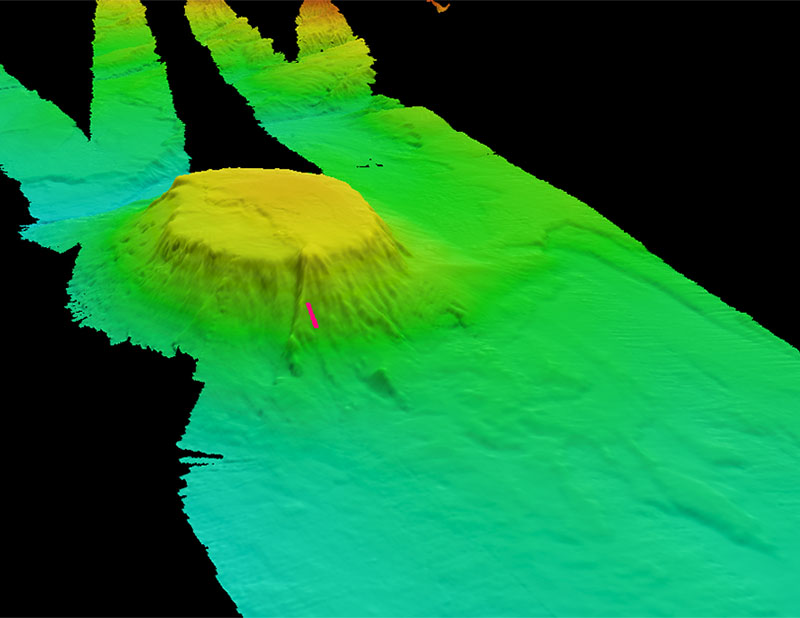
Map showing the dive track of dive 08 of the Deep Connections 2019 expedition. Scale is water depth in meters. Download larger version (jpg, 351 KB).